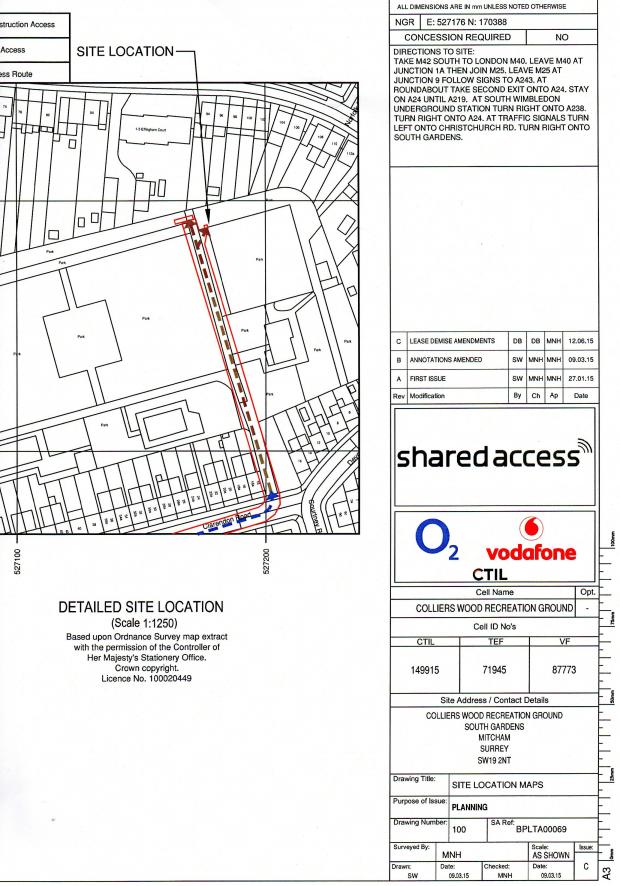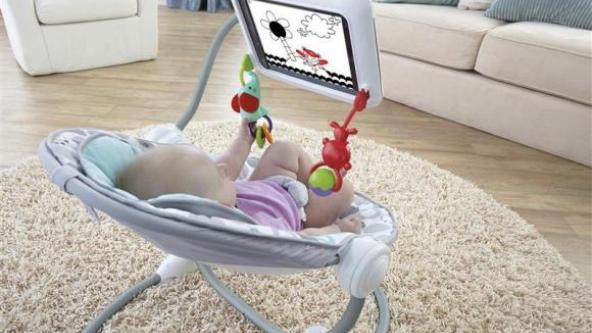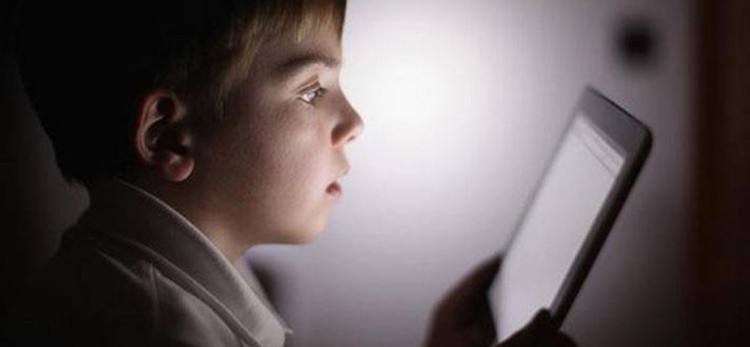[Recente nota sull’utilizzo di dispositivi wireless redatta dal Dr. Ronald M. Powell, scienziato americano in pensione, indirizzata alle scuole.
Traduzione in Italiano a cura della Associazione Elettrosmog Sicilia (http://www.elettrosmogsicilia.org/)]
20 Agosto 2015
di Ronald M.Powell, Ph. D.
Se nelle vostre scuole si utilizzano dispositivi wireless, come quelli che usano la tecnologia Wi-Fi, la salute del vostro personale, dei vostri insegnanti, e degli studenti può essere a rischio. Ma questo problema può essere affrontato e risolto con successo, e con beneficio per tutti.
Contesto: i dispositivi senza fili trasmettono informazioni utilizzando le radiazioni a radiofrequenza / microonde. La comunità di ricerca biomedica internazionale ha studiato l’impatto sui sistemi biologici di tali radiazioni per decenni, ma più intensamente negli ultimi anni. La stragrande maggioranza delle migliaia di pubblicazioni di ricerca peer-reviewed di questa comunità, quando sono state finanziate indipendentemente dalle industrie del settore, ha trovato effetti biologici che destano preoccupazione. Inoltre, questi effetti biologici si verificano a intensità di radiazione molto inferiore di quanto si era compreso precedentemente. In parole povere, sta emergendo una crisi sanitaria su scala mondiale e questo sta diventando un segno distintivo del 21° secolo. La comunità di ricerca biomedica internazionale sta cercando di metterci in guardia; ma, come società, non stiamo ancora ascoltando. Spero che questo messaggio possa contribuire a cambiare la situazione.
In qualità di scienziato, vi esorto a esaminare l’impatto sulla salute delle radiazioni a radiofrequenza / microonde generate da dispositivi senza fili. Esempi di tali dispositivi senza fili nel nostro ambiente sono quelli che usano la tecnologia Wi-Fi in tutte le sue varianti; telefoni cellulari e stazioni radio base (specificamente quelle situate nelle vicinanze delle scuole); telefoni cordless; computer con collegamenti senza fili, che siano modelli desktop, laptop o tablet; baby monitor senza fili; contatori elettrici intelligenti con collegamenti radio; elettrodomestici intelligenti con collegamenti radio; e forni a microonde.
Questa crisi è la conseguenza di molti fattori. Di seguito alcuni tra questi:
• Tutti gli esseri viventi sono di natura bioelettrica. Questo è alla base del funzionamento degli elettrocardiogrammi e degli elettroencefalogrammi. Tali esami misurano i deboli segnali elettrici che sono presenti nel cuore e nel cervello. Le attività svolte da tali deboli segnali elettrici, e così tanti altri segnali elettrici negli esseri viventi, possono essere disturbate dalla radiazione a radiofrequenza/microonde.
• Le intensità delle radiazioni a radiofrequenza / microonde artificialmente generate dall’uomo sono in aumento esponenziale e già superano, di molti ordini di grandezza, le intensità con le quali tutta la vita sulla Terra si è evoluta. In poche parole, stiamo annegando in un crescente mare di radiazione artificiale a radiofrequenza / microonde.
• La natura invisibile della radiazione a radiofrequenza / microonde lascia la gente comune e i preposti a prendere decisioni ignari delle intensità crescenti di radiazioni intorno a loro stessi.
• L’autentica utilità dei dispositivi senza fili promuove la negazione dei rischi.
• La pubblicità intensa, la potenza economica, e la potenza politica delle ricche industrie del settore consente loro di controllare il pubblico dibattito e di tenere in mano gli enti di controllo governativi e gli enti legislativi.
• Gli standard federali attuali per la limitazione dell’esposizione del pubblico alle radiazioni a radiofrequenza / microonde sono obsoleti e troppo permissivi. Questi standard sono basati solo sul riscaldamento termico. In pratica, il Governo sostiene che se non si viene cotti dalle radiazioni, allora va tutto bene. Questi standard federali ignorano molti effetti biologici che si verificano a intensità molto inferiori, lasciando il pubblico senza protezione.
• I governi statali e federali stanno sostenendo l’espansione illimitata delle tecnologie radio senza fili, e stanno perfino co-finanziando tale espansione, imponendo l’accettazione della tecnologie radio senza fili da parte del pubblico. Tali azioni rispecchiano una diffusa mancanza di comprensione, o una cecità volontaria per la scienza di base e le sue conseguenze per la salute pubblica.
• Alcune delle più gravi conseguenze dell’esposizione a radiazioni a radiofrequenza / microonde (come danno al DNA, cancro e infertilità) sono particolarmente nefaste perché non danno segni preliminari di allarme.
• Altre conseguenze dell’esposizione danno segnali premonitori (come disturbi del sonno, mal di testa, stanchezza, ronzio nelle orecchie, perdita di memoria, vertigini, aritmia cardiaca, e molti altri); ma questi segnali vengono troppo spesso liquidati in quanto possono avere pure altre cause, complicando l’identificazione della vera causa.
• L’assenza di formazione di routine dei medici sugli effetti biologici della radiazione a radiofrequenza / microonde rende difficile per i medici l’identificare le cause e fornire un orientamento efficace.
• Perfino i soggetti consapevoli non possono controllare la loro esposizione in ambienti condivisi con altri, perché le radiazioni che li circondano, proprio come il fumo causato da altri, è imposto su di loro da individui inconsapevoli. Solo i governi possono risolvere efficacemente questo problema, ed essi attualmente sono parte del problema. Per il momento il pubblico deve proteggersi da sé, e questo richiede un’educazione pubblica.
Fortunatamente, molti dei servizi che i dispositivi radio senza fili offrono possono essere realizzati con ben più sicuri dispositivi con cavo. I dispositivi cablati realizzano la connettività con cavi a fibra ottica, coassiali o Ethernet. I dispositivi cablati sono più veloci, più affidabili e con più alta sicurezza informatica. Tuttavia, essi sono meno mobili, meno convenienti e un po’ più costosi da installare. Ma questi svantaggi impallidiscono in confronto ai benefici di una buona salute. In sintesi, le scuole pubbliche possono proteggere il loro personale, gli insegnanti e gli studenti dai rischi alla salute derivanti dai dispositivi radio senza fili, tra cui quelli utilizzanti Wi-Fi, attraverso la conversione alla connettività cablata, utilizzando cavi Ethernet. Inoltre, agli studenti può essere insegnato un uso sicuro della tecnologia e possono trasferire a casa ciò che imparano per proteggere le loro famiglie.
Come punto di partenza consigliato per esplorare le preoccupazioni riguardanti le radiazioni generate dai dispositivi radio senza fili, ho allegato un elenco commentato di riferimenti e un elenco commentato di video. Si prega di vedere, in particolare, il video (1), chiamato “Wi-Fi nelle scuole, i fatti”, realizzato in Australia, a pagina 6.
Saluti.
Ronald M. Powell, Ph.D.
20316 Highland Hall Drive
Montgomery Village, MD 20886-4007
Telephone: 301-926-7568
Email: ronpowell@verizon.net
Il mio profilo
Sono uno scienziato del Governo USA in pensione (Ph.D., Fisica applicata, Università di Harvard, 1975). Durante la mia carriera, ho lavorato per l’Ufficio Esecutivo del Presidente, la National Science Foundation, e il National Institute of Standards and Technology. Per queste organizzazioni, rispettivamente, ho svolto valutazioni di programmi di ricerca e sviluppo, ricerca su politiche ambientali, e sviluppo di misure a supporto di industrie del settore elettronico ed elettrico e della comunità di ricerca biomedica. Attualmente interagisco con altri scienziati e medici di tutto il mondo sull’impatto dell’ambiente – incluso l’ambiente elettromagnetico a radiofrequenza / microonde – sulla salute umana.
LISTA DI RIFERIMENTI CON ANNOTAZIONI
La comunità internazionale di ricerca biomedica ha condotto migliaia di studi che cercano di identificare gli effetti biologici dell’esposizione ai campi elettromagnetici sia alle basse che alle alte frequenze, estendendosi alla regione delle microonde. Sono così tanti gli studi i quali hanno trovato effetti biologici seri originati da tali campi, a intensità precedentemente ritenute sicure, che sono necessarie immediate misure per allertare l’opinione pubblica e per abbassare i livelli di esposizione consentiti.
La revisione più massiccia di letteratura biomedica è il BioInitiative Report del 2012 di 1479 pagine che considera circa 1800 pubblicazioni di ricerca biomedica, la maggior parte delle quali uscite nei precedenti cinque anni. Il BioInitiative Report del 2012 è stato preparato da un gruppo internazionale di 29 esperti, tra cui molti Ph.D. e medici, da dieci nazioni tra cui gli USA che ha contribuito con il maggior numero. La revisione conclude che “La continua implementazione di tecnologie e dispositivi radio senza fili pone la salute pubblica globale a rischio a causa del commercio illimitato del settore wireless a meno che siano implementati dei limiti di esposizione nuovi e di gran lunga inferiori e forti avvertimenti precauzionali.”
BioInitiative Working Group, Cindy Sage, M.A. and David O. Carpenter, M.D., Editors, BioInitiative Report: A Rationale for Biologically-based Public Exposure Standards for Electromagnetic Radiation, December 31, 2012 http://www.bioinitiative.org
Un gruppo di sei medici in Oregon, guidato dal Dott. Paul Dart, ha rilasciato nel Giugno 2013, una revisione di 79 pagine di 279 pubblicazioni di ricerca biomedica. Questa review esamina la questione salute rispetto a “telefoni cellulari, stazioni radio base, Wi-Fi, contatori intelligenti e altri dispositivi che emettono radiofrequenza o frequenza estremamente bassa”. Questa review osserva che “E’ necessario ridurre gli attuali livelli di esposizione, invece di aumentarli. La FCC – Federal Communications Commission deve proteggere specialmente i gruppi vulnerabili nella popolazione inclusi i bambini e gli adolescenti, le donne in gravidanza, gli uomini in età riproduttiva, gli individui con sistemi immunitari compromessi, gli anziani e i lavoratori.” Questa review è pubblicata sul sito web della FCC al link titolato “Health Effects of RF – Research Review (87)”.
Biological and Health Effects of Microwave Radio Frequency Transmissions, A Review of the Research Literature, A Report to the Staff and Directors of the Eugene Water and Electric Board, June 4, 2013
http://apps.fcc.gov/ecfs/comment/view?id=6017465430
Michael Bevington, nel 2013, ha pubblicato un libro che riassume le risultanze di 1828 pubblicazioni di ricerca biomedica. Il libro descrive i sintomi causati dall’esposizione a radiazione elettromagnetica, le molte malattie associate con tale esposizione, e i livelli di rischio relativo associati con specifiche sorgenti di radiazione elettromagnetica. Le citazioni degli articoli includono gli indici PMID per un facile reperimento sul database PubMed.gov del National Institute of Health. Questo sito web fornisce il più grande indice di letteratura di ricerca biomedica nel mondo. Electromagnetic Sensitivity and
Electromagnetic Hypersensitivity: A Summary by Michael Bevington NEW EDITION: March 2013
http://www.es-uk.info
Circa 200 scienziati di 39 nazioni hanno sottoscritto un appello internazionale alle Nazioni Unite e all’Organizzazione Mondiale della Sanità nel Maggio 2015. Questi scienziati chiedono una migliore protezione per il pubblico dai danni da radiazione prodotti da molte sorgenti radio, 4 tra cui “telefoni cellulari e cordless e le loro stazioni radio base, Wi-Fi, antenne per radiodiffusione, contatori intelligenti, e baby monitors” tra gli altri. Complessivamente questi scienziati hanno pubblicato circa 2000 articoli di ricerca sull’argomento.
https://www.emfscientist.org/index.php/emf-scientist-appeal
L’agenzia Internazionale per la Ricerca sul cancro, dell’Organizzazione Mondiale della Sanità, ha già classificato i campi elettromagnetici a radiofrequenza nella classe 2B (“possibile cancerogeno”), principalmente sulla base dell’aumentato rischio di cancro al cervello. Tale decisione ha avuto luogo nel 2011. Da allora, si è incrementata la ricerca che supporta una classificazione più severa del rischio (“probabile cancerogeno” o anche “noto cancerogeno”)
http://www.iarc.fr/en/media-centre/pr/2011/pdfs/pr208_E.pdf
L’American Academy of Environmental Medicine (AAEM), che forma i medici per la Certificazione in Medicina Ambientale, ha dichiarato: “AAEM sostiene fortemente l’utilizzo di connessioni internet cablate, e incoraggia l’evitamento della radiofrequenza come il Wi-Fi, telefoni cellulari e cordless e loro stazioni radio base e ‘contatori intelligenti’.” AAEM afferma inoltre che “la letteratura scientifica peer reviewed dimostra la correlazione tra esposizione a RF (radiofrequenza) e malattie neurologiche, cardiache e polmonari come pure disordini riproduttivi e allo sviluppo, disfunzioni immunologiche, tumori e altre condizioni di salute. L’evidenza è inconfutabile.” AAEM conclude: “Installare tecnologia Wi-Fi nelle scuole e in spazi pubblici rischia di essere un diffuso pericolo per la salute pubblica che il sistema medico non è ancora preparato ad affrontare.”
AAEM, Wireless Radiofrequency Radiation in Schools, November 14, 2013
http://www.aaemonline.org/pdf/WiredSchools.pdf
L’American Academy of Pediatrics (AAP), I cui 60000 dottori si prendono cura dei nostri bambini, supporta lo sviluppo di standard per l’esposizione a radiazione a radiofrequenza più restrittivi che proteggano meglio il pubblico, particolarmente i bambini. L’AAP, in una lettera alla Federal Communications Commission (FCC) e alla Food and Drug Administration (FDA), datata 29 Agosto 2013, dichiara che “I bambini non sono piccoli adulti e che sono impattati sproporzionatamente da tutte le esposizioni ambientali, inclusa la radiazione da telefono cellulare. Gli standard FCC attuali non prendono in considerazione tali distinte vulnerabilità e non usano modelli specifici a donne in stato di gravidanza e a bambini. E’ essenziale che ogni nuovo standard per telefoni cellulari o altri dispositivi radio senza fili siano basati sulla protezione delle popolazioni più giovani e maggiormente vulnerabili per assicurare che siano salvaguardate in tutta la loro vita.”
http://apps.fcc.gov/ecfs/document/view?id=7520941318
Il Governo USA ha una grande responsabilità per la crescita esponenziale dei livelli di radiazione da dispositivi radio senza fili nell’ambiente. Nel 1996, il Congresso degli Stati Uniti ha approvato, e il presidente ha firmato, il Telecommunications Act. Sotto la pressione delle industrie del telefono cellulare, tale legge includeva questa disposizione: “Nessun governo statale o locale o strumento di essi possono disciplinare il collocamento, la costruzione e la modifica degli impianti per i servizi radio personali [stazioni di telefonia mobile] sulla base degli effetti ambientali delle emissioni a radiofrequenza nel caso in cui tali impianti siano conformi alle norme della Commissione Federale delle Comunicazioni [FCC] riguardanti tali emissioni.”. Poiché le norme della Commissione Federale delle Comunicazioni sulla esposizione a radiazioni sono così permissive, questa disposizione impedisce ai governi statali e locali di proteggere la loro popolazione dalle radiazioni delle stazioni di telefonia mobile, per motivazioni di preoccupazione per la salute.
Telecommunications Act of 1996
https://transition.fcc.gov/Reports/tcom1996.pdf
La Commissione Federale delle Comunicazioni (FCC) ha agito in partnership con le industrie del settore wireless consentendo livelli di radiazione di gran lunga superiori a quelli che la letteratura di ricerca biomedica indica siano necessari per proteggere la salute umana. Il successo delle industrie wireless nel controllare la FCC, le commissioni del Congresso degli Stati Uniti che supervisionano la FCC e l’esecutivo è dettagliato in una nuova monografia del Centro di Etica dell’Università di Harvard. Come esempio di tale controllo, il Presidente recentemente nominato, come capo della FCC, l’ex capo della CTIA – l’Associazione Wireless, che è l’organizzazione di lobbying più importante per il settore wireless. Questo, ovviamente, è il fenomeno cosiddetto della “porta girevole”.
Norm Alster, Captured Agency: How the Federal Communications Commission is Dominated by the Industries It Presumably Regulates (2015)
http://ethics.harvard.edu/news/new-e-books-edmond-j-safra-research-lab
Inoltre, il “American Recovery and Investment Act del 2009” del Governo USA ha fornito finanziamenti che sono stati utilizzati per motivare l’installazione di contatori intelligenti radio (anche chiamata la “Advanced Metering Infrastucture” o “AMI” – infrastruttura di contabilizzazione avanzata) offrendo una partecipazione nei costi ai gestori pubblici che avrebbero adottato tali contatori.
https://www.smartgrid.gov/recovery_act/overview/smart_grid_investment_grant_program.html
Molti stati hanno poi esteso l’impatto del sopra citato Atto imponendo l’accettazione dei contatori intelligenti radio da parte del pubblico. Questi contatori contengono trasmettitori e ricevitori a microonde e sono collocati su, o all’interno ogni casa. Un documento redatto per ordine di una corte Californiana indica che ogni contatore intelligente diffonde impulsi di radiazioni in media 10000 volte al giorno e fino a un massimo di 190000 volte al giorno. Tali impulsi inondano il vicinato con radiazioni, ogni giorno e ogni notte per tutto l’anno.
http://emfsafetynetwork.org/wp-content/uploads/2011/11/PGERFDataOpt-outalternatives_11-1-11-3pm.pdf
Sempre di più, la gente sta diventando consapevole della minaccia che le radiazioni a radiofrequenza pongono sulla salute. L’opposizione iniziale si concentra primariamente sulle sorgenti di esposizione imposte, specialmente quando gli individui esposti comprendono bambini non ancora nati e bambini piccoli, poiché sono tra i soggetti più vulnerabili. Così, l’opposizione iniziale più forte affiora per l’installazione di ripetitori telefonici, specialmente nelle vicinanze di scuole; per il Wi-Fi nelle scuole; e per i contatori intelligenti wireless piazzati sulle case o al loro interno. La maggior parte di stati attualmente hanno gruppi di opposizione, e alcuni stati hanno anche 10 o 20 di tali gruppi. Tali gruppi stanno cercando una liberazione attraverso gli enti regolatori statali, attraverso le legislature statali, e attraverso i tribunali. Di seguito è riportato un esempio delle centinaia di siti web USA che rispecchiano la natura e la portata dell’opposizione per l’espansione sfrenata della tecnologia wireless. Tali siti cercano di educare il pubblico e i decisori, e, quindi, di promuovere azioni di risposta fondate su basi scientifiche.
The BabySafe Project
http://www.babysafeproject.org/the-science/
National Association for Children and Safe Technology
http://www.nacst.org/
Take Back Your Power’s index to groups in the USA opposed to wireless smart meters http://takebackyourpower.net/directory/us/
Smart Grid Awareness, a Website by Skyvision Solutions, Consumer Protection Advocate
http://smartgridawareness.org
LISTA DI VIDEO CON ANNOTAZIONI
Esistono centinaia di video su Internet che riguardano l’impatto delle radiazioni a radiofrequenza sulla salute. Qui ne sono richiamati solo alcuni, i quali forniscono una buona introduzione a questo argomento. Con una ricerca su Internet se ne troveranno molti di più.
(1) Una introduzione ai rischi per la salute posti dalla tecnologia Wi-Fi nelle scuole
Wi-Fi in Schools, the Facts (September 9, 2013) (18 minutes)
produced by Wi-Fi in Schools Australia
https://www.youtube.com/watch?v=QQryZbxlqXI&feature=youtu.be
(2) vasta panoramica dell’impatto delle radiazioni elettromagnetiche sulla salute umana, in particolare alle frequenze delle microonde, con un accento particolare sui bambini e l’ambiente scolastico
Electromagnetic Radiation Health for Children 2014 (70 minutes)
by Dr. Erica Mallery-Blythe, a UK physician
https://www.youtube.com/watch?v=sNFdZVeXw7M
(3) Documentario sui tentativi del settore wireless per sopprimere l’informazione al pubblico sugli effetti alla salute delle radiazioni a radiofrequenza
Microwaves, Science & Lies (2014) (90 minutes)
by Jean Heches and Nancy de Meritens (of France)
https://vimeo.com/ondemand/17755/89417454
(4) Testimonianze video da parte di individui danneggiati dalle radiazioni generate da terminali senza fili
Cell Phones Cause Cancer (October 17, 2012) (9 minutes)
by Jimmy Gonzalez, Esq.
https://www.youtube.com/watch?v=DIlOVJd0lA8
Woman suffers acute radiation exposure from a bank of smart meters (January 21, 2015) (3 minutes).
Produced by Maryland Smart Meter Awareness
https://www.youtube.com/watch?v=F9QzuWPw6Y0&feature=youtu.be
Man experiences adverse health effects from exposure to a smart meter (March 7, 2013) (3 minutes).
By Garic Schoen of Gaithersburg, MD produced by Maryland Smart Meter Awareness
http://marylandsmartmeterawareness.org/smart-meter-news/maryland-ms-resident-testimony-toeconomic-matters-committee-re-hb1038-on-march-14-2013/
Individuals with high sensitivity to the radiation from wireless devices search for increasingly rare safe environments. Searching for a Golden Cage (May 8, 2014) (13 minutes)
produced by Nadav Neuhaus
http://time.com/golden-cage/
Originale: https://skyvisionsolutions.files.wordpress.com/2015/08/message-to-public-schools-about-wireless-devices.pdf
Tradotto liberamente da Ass. Elettrosmog Sicilia Settembre 2015
Versione PDF della traduzione scaricabile al seguente link:
http://www.elettrosmogsicilia.org/pdf/riferimenti/messaggio-alle-scuole-Dr-Powell.pdf






